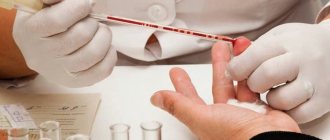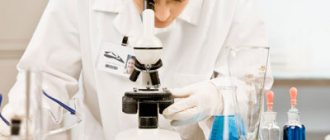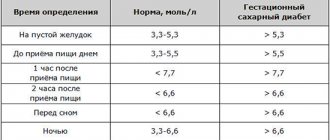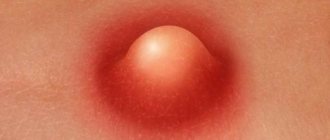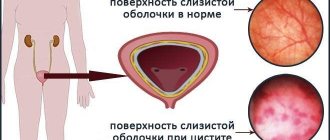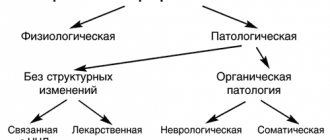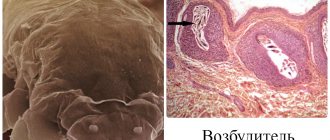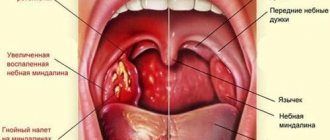A stool test for worm eggs is a standard medical test that is prescribed for adults and children. It is used for the diagnosis of protozoa and helminthiases, the pathogens of which parasitize the human gastrointestinal tract.
According to WHO, about 90% of the population is infected with one or another helminthiasis. The most common are pinworms and roundworms. Worm infestations are often asymptomatic, especially in people with good immunity. But an apparently healthy person can easily infect others with helminthiasis. The eggs of the parasite, released into the external environment, begin their life cycle: the hatched larvae enter the bodies of intermediate hosts, which are shellfish, fish, animals, and already pose a danger to humans, into whose body they enter through the food or contact-household route. That is why worm and protozoan eggs found in feces have an important diagnostic role. In addition, the test is simple, does not involve pain or discomfort, and requires only simple preparation from the patient and proper collection of a stool sample.
How to take a stool test for worm eggs and what conditions must be met in order for the study to be reliable, we will tell you in this article.
Why is analysis needed?
Taking a stool test for worm eggs should not be approached formally. The person to whom it is prescribed must understand that identifying helminthic infestations is important, first of all, for himself. After all, parasites cause serious harm to health; some of their types are able to penetrate the liver, brain, heart and other organs.
Without timely treatment, severe cases of helminthiasis can be fatal. In addition, being a carrier of parasites, a person can infect them with the eggs of his family members, unwittingly causing health problems for relatives and friends.
Laboratory tests of feces do not always reveal helminthic infestation, because a small sample of biological material submitted for analysis may not contain helminth eggs.
Parasites do not lay eggs all the time, so they are unevenly distributed in the stool. In addition, the results may be affected by ignoring the rules for preparing for analysis, improper collection and storage of material.
Therefore, it is necessary to strictly follow all the rules for preparing for the test, collecting and storing the sample, and be aware of the need to retake it if the test shows the absence of parasites.
What symptoms may indicate a worm infection?
A symptom that clearly indicates the presence of worms is itching and movement in the anus, especially noticeable in the evening and at night. This is typical for enterobiasis - pinworm infestation. Invasion by other types of helminths does not have such a clear and characteristic clinical picture; symptoms may be unexpressed, or also characteristic of many other diseases.
The following symptoms may cause suspicion of helminthiasis:
- Decreased appetite up to its complete absence;
- Flatulence and intestinal disorders;
- The presence of blood and mucus in the stool;
- Loss of body weight;
- Frequent headaches, sleep disturbances;
- Constant feeling of loss of strength;
- Pale skin;
- Weakening of the immune system, resulting in susceptibility to frequent colds;
- Grinding of teeth in sleep;
- Skin problems.
If at least a few of these symptoms appear, it is necessary to undergo an examination, including to identify a parasitic infestation.
When is it necessary to consult a therapist on your own?
You need to sign up for a helminthiasis test if you have the following symptoms:
- rapid weight loss with the same appetite;
- symptoms of anemia - the appearance of shortness of breath, pallor of the skin;
- frequent allergic reactions accompanied by skin lesions;
- abdominal discomfort;
- bowel dysfunction;
- heaviness in the right side;
- frequent nausea;
- feeling of bitterness in the mouth.
A sure sign of the presence of parasites is constant itching in the anus. It often happens that the presence of parasites in the body is completely asymptomatic or is not accompanied by characteristic signs.
How to prepare for the analysis?
To increase the reliability of the result of a stool test for eggworms, it is necessary to follow certain rules before submitting it.
It makes no sense to examine feces for worm eggs in the following cases:
- When taking antiparasitic drugs and immediately after their course;
- After an X-ray examination using barium preparations;
- After oil enemas.
In all these cases, the probability of detecting helminth eggs approaches zero, and the results of the analysis may not be indicative.
Taking certain potent medications can also reduce the effectiveness of studies. If they are not vital, then they must be stopped 3 days before collecting stool for analysis.
If the patient is undergoing a course of treatment that cannot be interrupted, for example, a course of taking antibiotics, then it is better to postpone the stool test for helminth eggs until the end of the treatment, since under conditions of a changed environment in the intestines, the reproduction of helminths slows down and their eggs may not be detected.
Attention! If the patient has been treated with antibiotics, then a stool test for eggworm can be taken no earlier than 3 days after the end of the course.
It influences the research results and the composition of the food that a person ate on the eve of collecting biological material. When consuming foods that promote increased gas formation and loosening of the intestines, food masses quickly pass through the intestinal tract, and the likelihood of containing parasite eggs in the feces is reduced. Therefore, 1-2 days before collecting stool for analysis for worm eggs, it is recommended to exclude from the diet foods that cause intestinal weakening.
The set of these products is individual for each person, but, in general, they include:
- Fresh and sauerkraut;
- Fresh beets;
- Apricots, plums;
- Prunes;
- Grape;
- Persimmon;
- Kefir;
- Cucumbers, zucchini, pumpkin;
- Legumes;
- Watermelon melon.
It is also not recommended to consume foods that color feces in uncharacteristic colors - the already mentioned beets, blueberries, cherries, black currants.
By adhering to these simple rules, you can significantly increase the likelihood of identifying a helminthic infestation and begin its treatment in a timely manner.
What are the rules for collecting stool for analysis?
If all the rules for preparing for the examination of stool for the presence of parasite eggs, indicated above, have been followed, then a sample of the material can be taken for analysis. Usually this moment raises many questions: how much feces is needed for analysis of the eggworm, what are the rules for collecting it, is it possible to store the collected material, etc. Let's look at the answers to these questions in detail.
In what container should I collect stool?
Laboratories do not accept stool in matchboxes or other cardboard boxes for analysis; to collect the material, you can take a small glass container with a tight lid or buy a special plastic container for collecting stool at the pharmacy. This container is convenient because it is equipped with a spatula for collecting the sample and a tight-fitting lid that does not allow odor to pass through.
There is no need to sterilize glass containers, and even more so pharmaceutical containers. It is enough to clean the jar and lid with baking soda and rinse thoroughly with clean hot water, and the container for collecting feces does not need to be washed.
If the collection is carried out in home containers, then it is most convenient to do it with a disposable spoon. You can also use a cotton swab and a few matches. You cannot use wood chips and twigs brought from the street for this purpose, since they may contain parasite eggs, which will distort the analysis results.
Do I need to wash myself?
If, when collecting urine for analysis, it is necessary to wash to prevent secretions and microflora living on the genitals from getting into the biological material, then when collecting feces for analysis for worm eggs, it is not recommended to wash.
Some types of helminths (pinworms) lay eggs around the anus, and worm eggs from a previous bowel movement could also remain in the anus.
During the passage of feces, they may end up in the first portion of biological material, which increases the likelihood of detecting helminthic infestation.
Attention! If you need to donate stool for eggworm testing, the collection rules dictate that you do not wash yourself before the collection procedure. It's better to do this after it's finished.
How to properly collect stool for analysis?
It is necessary to defecate in a clean, dry pot or vessel. It is not allowed to “catch” material from the toilet water. It is also necessary to ensure that urine does not get on the feces; you need to empty your bladder in another place.
The material is collected from several places in the feces: from the initial section, from the middle and end, from the surface and depth. The stool sample for analysis should be approximately the size of a walnut. Immediately after collection, the container must be tightly closed to prevent the material from airing or drying out.
How can you induce a bowel movement?
Physiological processes are not always amenable to conscious control; it is almost impossible to force the intestines to release waste products on demand. The easiest way to collect stool for analysis for worm eggs is for those people who are used to emptying their bowels in the morning after waking up, since laboratories, as a rule, accept biological materials for analysis in the morning.
To stimulate the intestines to empty, it is not recommended to use enemas or anal suppositories, since this reduces the likelihood of obtaining a reliable test result for the eggworm, which is already not too high.
You can get morning bowel movements naturally by following these recommendations:
- After waking up, drink a glass of cool water;
- After 15-20 minutes, have breakfast;
- If you don’t feel like going to the toilet within 20 minutes after breakfast, do light self-massage of the abdomen and exercises to enhance intestinal motility.
Self-massage of the abdomen is performed while lying on your back. Having relaxed your stomach, stroke around the navel in a spiral, the direction of movement is clockwise. It is more convenient to do this by clenching your fingers into a fist.
After the massage, do the following exercises to stimulate the intestines to empty:
- Standing on all fours, draw in and relax your stomach;
- Lying on your back, pull your knees towards your chin and then return to the starting position.
If all of the above measures do not have an effect, this means that material for analysis will have to be collected in advance.
But before moving on to the next point of this article and finding out how long you can store feces for worm eggs, remember the method recommended above for improving intestinal motility. By using it daily, you will quickly accustom your body to regular morning bowel movements, which will undoubtedly be very beneficial for your health.
How long can the collected material be stored?
It is necessary to store a sample of material for analysis for helminth eggs in a tightly closed container, tied in a plastic bag, in the refrigerator at a temperature of +6-10°C. With this storage, the feces will not dry out, worm eggs, if present in the sample, will not change and will be available for identification. Storage time should not exceed 8-12 hours.
How to collect stool for analysis from a child?
The rules for collecting stool for analysis for eggworm in children, as well as preparing for it, are exactly the same as for adults. The exceptions are children who are breastfed, as well as babies wearing diapers.
Since the baby’s stool depends on the mother’s nutrition, she should, 1-2 days before collecting stool for analysis, exclude from her diet foods that cause weakening of the child’s intestines.
To test for helminth eggs, you should not collect stool from a diaper. The child should empty his bowels into a potty or onto a clean, dry diaper. Make sure that urine does not come into contact with the test material.
To take stool for analysis, it is forbidden to induce defecation in children using an enema, anal suppositories, or a thermometer lubricated with Vaseline. All this leads to a decrease in the reliability of the analysis. You can stimulate defecation by lightly massaging the child’s abdomen in a clockwise direction, doing exercises with tucking the knees to the chin, and laying it on the stomach.
How to properly collect feces
Doctors recommend collecting stool in the morning, since this biomaterial is considered the most informative. The collection of feces is carried out in a container purchased at a pharmacy using the tool that comes with it. It is recommended to take different stool samples (from the edge, center, inside).
The container is closed, signed and sent to the laboratory. The ideal option would be if the biomaterial is examined within an hour after the collection of feces; their maximum shelf life is 7-8 hours.
The sample should be stored at a temperature of 4-8 degrees. If stool is kept at room temperature for more than 60 minutes, it becomes unsuitable for analysis. Material that has been left in unsuitable conditions for a long time should be discarded.
How is material research carried out in the laboratory?
To determine the presence of worm eggs in feces, as well as their type, the following laboratory research methods are used:
- Advocacy. With this method, the material is mixed with water, settled and the liquid fraction is drained. This is done several times. Eggs and fragments of helminths have a higher specific gravity, so they always remain in the sediment. After repeated washing of the material, the sediment is examined under a microscope for the presence of parasites.
- Exhaustion. This method is used to identify fragments of helminths. A semi-liquid mass is prepared from the sample provided for analysis, placed in a Petri dish and, removing light particles with tweezers, they are examined under a magnifying glass or microscope. In this way, it is possible to identify fragments of helminths and determine their type.
- Native smear. With this method, only one drop of an emulsion obtained by diluting stool with water is examined under a microscope. This allows you to detect eggs of worms and protozoan parasites. But if their quantity is small in the submitted material, they may simply not get into the test drop, as a result of which a negative analysis result may turn out to be false.
- Thick stroke. This method is more informative, because allows you to study a larger amount of material compared to other methods. A pea-sized sample is placed on a glass slide and pressed against a transparent polymer plate soaked in a liquid that has antireflective properties. After an hour, the sample acquires the required degree of transparency and is examined under a microscope. This method is considered the most progressive, its reliability is about 85%.
Performing a stool test for eggworms using any of these methods does not take much time; the result can be ready within the day of delivery. Delays are usually due to labor overload.
What is a stool test for worm eggs?
During this manipulation, the laboratory assistant examines the feces for the presence of helminth eggs. As a result of this analysis, eggs of almost all parasites known to medicine can be identified, and this is about 250 species. In the human body they reproduce by laying eggs. Most varieties of helminths parasitize the human intestine or other parts of the gastrointestinal tract. In this case, the eggs of worms enter the digestive tract, and from there they are excreted along with feces.
A smear containing feces from the patient being examined is examined under a microscope. Multiple magnification allows you to see eggs and larvae of helminths in the diagnostic material.
This sign allows us to say for sure that the body is parasitized by worms of one of three groups:
- Nematodes (roundworms, whipworm, necator);
- Fluke flukes (schistosoma, liver fluke, cat fluke, or lanceolate fluke);
- Cestodes (tape tape, small and wide tapeworm).
In addition to helminth eggs, their shells, as well as dysenteric amoebas, Giardia and cyclosporidium oocysts, can be found in feces.
What could be the interpretation of the analysis result?
Examination of feces for helminth eggs can only show the presence or absence of parasites that reproduce in the gastrointestinal tract: roundworms, tapeworms, and flukes. To detect other helminthiasis, for example, echinococcosis, an enzyme-linked immunosorbent assay (ELISA) is used.
If eggs and fragments of worms are not found in the submitted material, then the result of the analysis in the transcript will be negative. However, a negative result does not guarantee the absence of parasitic infestation.
Attention! Even if all the rules for preparing for the analysis, collecting it and submitting it are followed, there may be no signs of helminthic infestation in the stool fragment being examined. Therefore, to confirm negative results, it is necessary to take 2 more stool tests for worm eggs at intervals of 2-4 days.
If, after taking a stool test for eggworms, the transcript contains a positive result for any type of helminth (or several), then their presence is beyond doubt, and the patient is prescribed treatment.
In addition to helminthic infestation, stool analysis can be used to diagnose infection with protozoan microorganisms: Giardia, dysenteric amoebae, and cyclosporidium.
Conclusion
The problem of helminthiasis is very common among modern humanity. It is important to identify parasites in the early stages of the disease and take measures to destroy them. Every person should know: how to collect stool, how to hand it over correctly, how long a container with stool can be stored, how long the analysis is done in the laboratory, how long the analysis result can be valid.
With such knowledge, together with following the rules of personal hygiene, you will be healthy and your children will be happy and cheerful.
What to do if helminthiasis is detected?
If a stool test for eggworms shows the presence of a parasite in the body, then under no circumstances should you refuse treatment. In addition to the fact that helminthiasis can become an obstacle to achieving a goal - going to work or study, enrolling a child in a preschool institution, obtaining a health certificate, etc., it can cause serious damage to health.
Human parasites feed on his vital juices and take away his energy. In addition, because of them, immunity is reduced, which can lead to the development of even more serious diseases.
Self-medication is also unacceptable. Antiparasitic agents are highly toxic. Even if the type of parasite is known, the dosage of a drug effective against it should be established only by a doctor, taking into account all the physical characteristics and condition of the patient. Treatment must be carried out under the supervision of a specialist, otherwise serious complications may arise due to the toxic effects of anthelmintics.
We should also not forget that worm eggs are easily transmitted through household items and personal contact. Therefore, when a parasitic infestation is detected in a person, examination and, if necessary, treatment of the rest of his family members, including pets, is required.
How often should I get tested?
Typically, a stool test for eggworms is taken once upon admission to preschool and general education institutions, to work, to a hospital, a sanatorium, when obtaining a certificate to visit the pool, as well as when undergoing a medical examination.
As for people working in public catering, at food industry enterprises and in other industries where it is necessary to have a sanitary book, they are required to undergo a stool test for helminths every time the sanitary book is updated. Depending on the type of activity, the frequency of updating a sanitary passport can be from six months to a year; according to this frequency, the validity period of a stool test for worm eggs is determined.
If a stool test for worm eggs is prescribed as part of the diagnosis for suspected helminthiasis, then if the result is positive, the first test is sufficient. Repeated studies are carried out after treatment.
If the result of the first test is negative, then it is necessary to take 2 more repeated stool tests for worm eggs, at intervals of 2-4 days, to confirm the negative result or establish its error.
Indications for use
The main indication for testing for eggworm and enterobiasis is the suspicion of the presence of the following parasites in the patient’s body:
- Roundworms. Necators, whipworms, roundworms, and duodenal crooked heads fall into this category.
- Flukes and trematodes.
- Tapeworms and cestodes. The most common representatives of this group are pork and bovine tapeworms.
Also, examination for eggworm is mandatory when sending a child to public organizations, such as kindergarten, school, sports clubs, summer camp. In such a situation, a referral for analysis is issued by a local pediatrician or a private family doctor. Experts warn that such an examination should not be treated as a mere formality, since parasites are found in the body in more than 30% of young patients.
The analysis must also be taken in the following cases:
- visiting the swimming pool;
- admission to hospital;
- registration of a medical record.
It would not be superfluous to periodically take a stool test for worms for the following groups of citizens:
- people who are forced to stay in a closed group for a long time, for example, in a barracks;
- citizens who often consume river fish that does not undergo the necessary heat treatment;
- people whose activities involve large livestock (especially pigs);
- dog breeders.
Parasitic pathologies of this type are detected only by examining stool. Other diagnostic methods are less effective.
